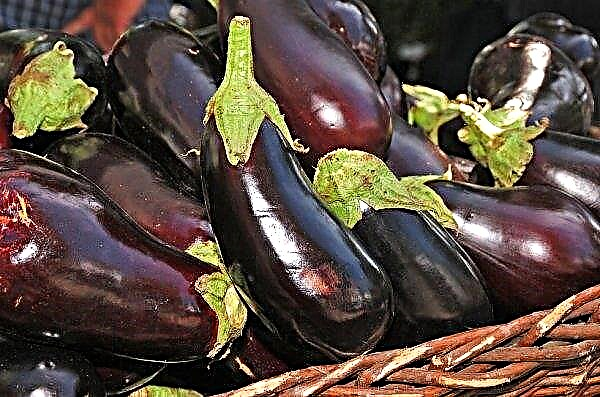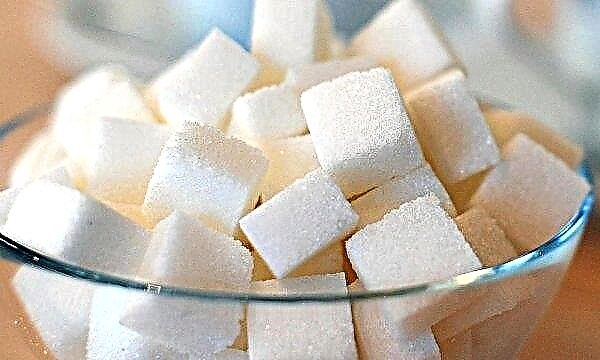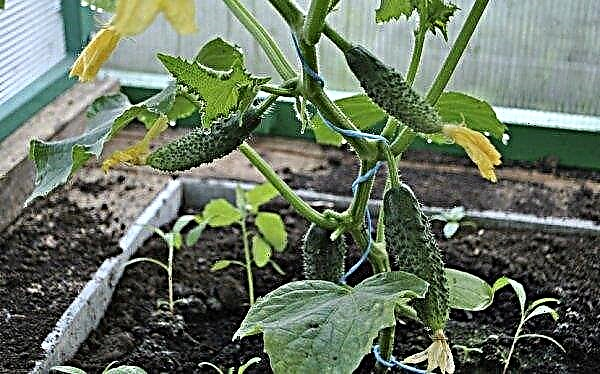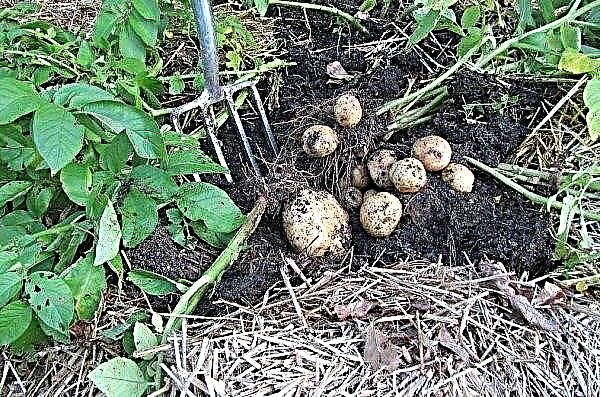Radish contains a large number of useful substances that are necessary for the human body. In order to get the maximum benefit from eating a vegetable, you need to know what vitamins, minerals and minerals are contained in this product, as well as how to choose a quality radish. You will learn about this in the article.
Description of vegetable culture
Radish is an annual or biennial plant from the genus Radish of the Cabbage family. One-year varieties are European, and two-year-olds are Japanese or Chinese. The name of the vegetable in Latin means “root”. Its fruits and tops are used in the preparation of various dishes in many countries of the world. It has root crops of a round or elongated shape, red, pink or pink-white, 2-3 cm in size. The tops are light or dark green. Radish has a sharp specific taste due to the mustard oil in the composition.

Radish composition
Radish tops are a more valuable product if the root crop. It is used to make salads and added to soups, side dishes, boiled or stewed meat. In the tops contains a more concentrated amount of nutrients than in root crops.
Radish roots contain 2 times more protein than other vegetables: tomato, squash, zucchini, and eggplant. This amount of protein affects the structure of body cells.
Energy composition per 100 g:
- proteins - 1.2 g;
- fats - 0.1 g;
- carbohydrates - 3.4 g.
The chemical composition also includes starch and dextrins, mono- and disaccharides, as well as amino acids. This product is rich in vitamins and minerals, which are discussed in more detail below.
 Radish is a low-calorie product; 20 kcal per 100 g of product
Radish is a low-calorie product; 20 kcal per 100 g of product
Vitamins
Radish has a large number of vitamins that have a positive effect on the human body.
- The vitamins that are found in this product include:
- B1 (thiamine), which promotes metabolism in the body, improves the growth and development of the cardiac, nervous and digestive systems.
- B2 (riboflavin) its function is to form red blood cells and antibodies, control the growth and functioning of the reproductive organs. Vitamin also has a positive effect on the health of the skin, nails, hair and the thyroid gland.
- B3 (nicotinic acid) promotes the expansion and improves microcirculation of small blood vessels, and also has detoxification properties.
- B5 (pantothenic acid) stimulates the creation of adrenal hormones, protecting the body from arthritis, colitis, allergies, and heart disease.
- B6 (adermin) stabilizes sleep, improves immunity, skin color, relieves symptoms of anemia and irritable bowel syndrome.
- B9 (folic acid) serves to enhance the functions of the circulatory and immune systems.
- C improves the condition of the skin, gums, teeth, promotes wound healing, affects the work of the brain.
- E improves the body's immunity.
Did you know? The vegetable was first brought to Europe by the traveler Marco Polo at the end of the 13th century from China.
Minerals
In addition to vitamins, this culture is rich in minerals.
- In the radish there are such minerals:
- Potassium affects the work of the cardiovascular system, controls blood pressure within the normal range, relieves allergy symptoms, and also positively affects the functioning of the nervous system.
- Calcium is needed to strengthen bones and teeth.
- Magnesium provides the heart, strengthens blood vessels, removes cholesterol, which is most necessary for the elderly.
- Sodium regulates the water-salt balance, improves the functioning of the kidneys.
- Phosphorus affects the functioning of the nervous and cardiovascular systems, is an important element in the formation of enzymes and hormones.
Useful properties of radishes
Due to the large number of vitamins and minerals, the vegetable has a positive effect on the human body. Its benefits are to increase immunity, the fight against SARS. Due to the large amount of folic acid, root crops positively affect the body of women, as well as the development of the fetus in pregnant women. It is also recommended to use it for vitamin deficiency, since it has a daily norm of ascorbic acid.

Radish lowers blood sugar, stabilizes hemoglobin in the blood, normalizes the functioning of the gastrointestinal tract, helps in the fight against oncology, improves blood vessels. Low-calorie vegetable, therefore suitable for use with various diets.
Did you know? The largest radish was grown by a Israeli Tamir farmer from Israel. The weight of the root crop was 10 kg, for this achievement the vegetable was included in the Guinness Book of Records.
Norms and rules of use
The daily rate of use of radishes is 100-170 g. This amount is enough to get all the nutrients necessary for the body, as well as strengthen the immune system. Nutritionists recommend that healthy people eat this product at least once every 7 days. Radish can be used in food boiled and raw. Best of all, there is a whole raw fruit, since it retains more vitamins of minerals and trace elements.
Contraindications for eating
Despite its beneficial properties, this vegetable can cause significant harm to the human body.
It is not recommended to use root crops for people who:
- gastrointestinal tract diseases;
- colitis;
- changes in the thyroid gland;
- metabolic disorders;
- flatulence;
- diseases of the liver and kidneys.
Important! To avoid the harmful factor of radish in diseases of the endocrine system, it is recommended to use it in a boiled form.Replace fact
How to choose a quality product
When choosing a product, it is necessary to carefully examine, first of all, the tops of vegetables. It should be fresh, not sluggish, this will indicate that the vegetable has recently been harvested. First use the tops. It must be cut and rinsed before cooking. Tops used for the preparation of soups, meat dishes and vegetable side dishes. Radishes without herbs can be stored for 7 days.
Root crops must be firm, smooth, free from defects. The skin should be flat and the flesh juicy. The appearance of black dots indicates that the process of decay begins in the fetus. It is best to store radishes in the refrigerator. In a cold environment, it retains freshness for up to two weeks.

Having familiarized yourself with the rules of choice, the norms of use, as well as the contraindications and useful properties of radishes, you can enjoy this seasonal vegetable, receiving the greatest amount of nutrients for the body.












